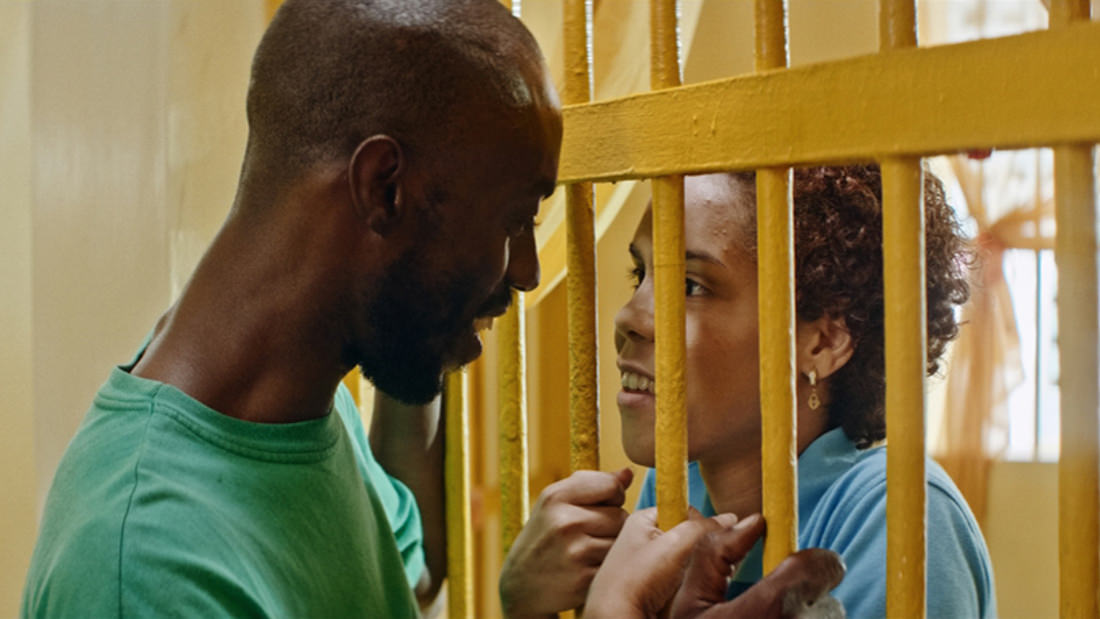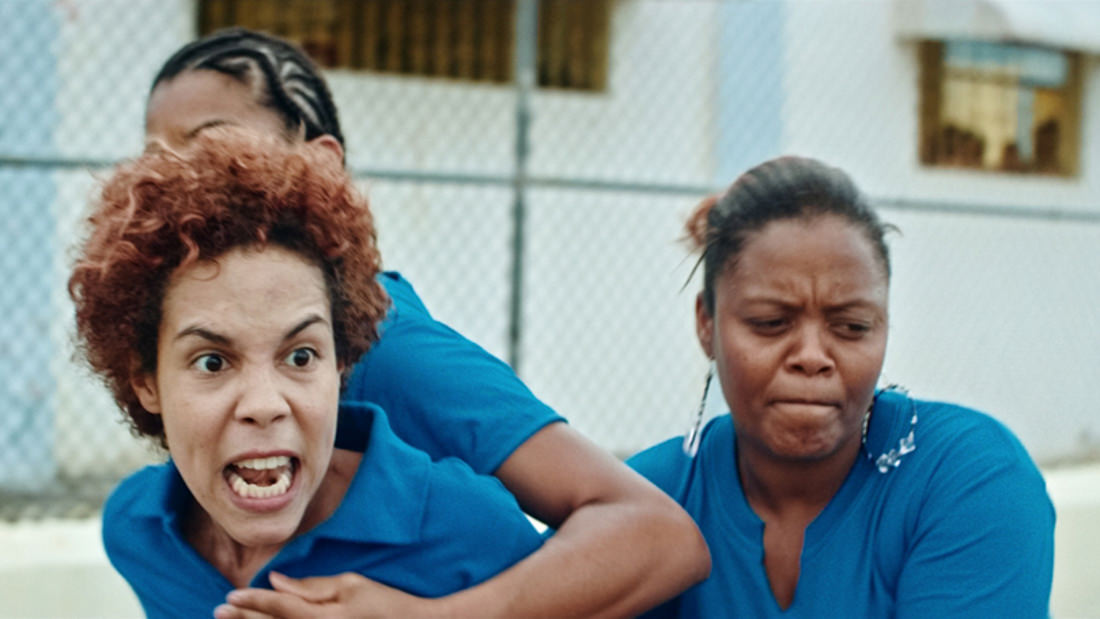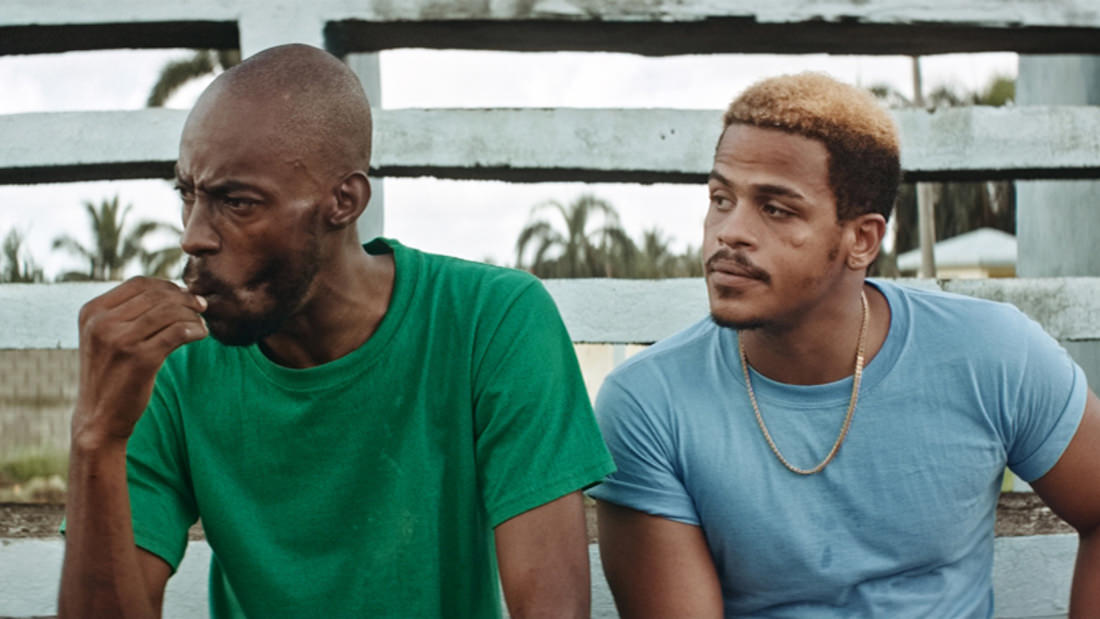Life is bursting at the seams in Carpinteros (Woodpeckers), the heart-wrenching love story captivating audiences worldwide. The film tells the story of Julian Sosa (Jean Jean), a Dominican-Haitian inmate in the Santo Domingo prison of Najayo, who falls in love with Yaneli (Judith Rodríguez), who’s in the women’s jail across the courtyard. They communicate – and eventually fall in love – using a sign language invented by the prisoners, which they dub carpintear.
As the first Dominican movie to screen at the Sundance Film Festival and as the country’s Best Foreign Language Film Oscar submission, Carpinteros is making waves both at home and internationally. But the movie’s global promotion tour has also revealed an ironic tension; its lead actor Jean Jean – the face representing Dominican cinema to world – is actually undocumented in his home country.
Jean shared his struggles in a recent Facebook post, explaining that, like his character Julian, he too feels imprisoned. As a Haitian-born immigrant who has lived in the Dominican Republic for the last 25 years, he has been unable to renew his status since it expired in 2015 – a problem that plagues many Haitian immigrants, despite the Dominican Republic’s controversial “regularization” program passed that year, which was meant to enable eligible Haitians and their descendants to formalize their citizenship or residency status.

As Jean Jean points out, Carpinteros tells an important story that resonates internationally, including in the United States, where Donald Trump rescinded the DACA program and has escalated deportations at an alarming rate. Jean Jean sees himself as a DREAMer, one who arrived to the Dominican Republic at a young age and is still stuck in immigration limbo. We spoke with Jean Jean about his character, his hopes for Carpinteros, and what it means to him to represent the Dominican Republic.
What would you say the main theme of Carpinteros is?
Carpinteros is a story that uses love as an excuse to speak about the yearning for freedom that these characters feel, and [the yearning] to connect despite the distance. This movie is really a hybrid between documentary and fiction, because José María Cabral was in the prison for more than nine months to write the script. He built the script based on real experiences (and 80% of the actors were actual inmates in the prison.) Once [Cabral] hired the professional actors, we created a film that was based on his script but that also incorporated our own experiences. [For example] he was open enough to include my real background as a Dominican-Haitian in the script, and that allowed us to explore Dominican-Haitian issues through this love story. In that sense, the film’s love story between a Dominican-Haitian man and a mulatto Dominican woman became a metaphor for the racial integration between the two people of the island.
Prisons are a reflection of the societies who build them.
Do you think that this film can educate viewers about the conditions in the prisons of Santo Domingo?
Prisons are a reflection of the societies who build them. In that sense, what’s shown in the film is a reflection of the real world, and the movie touches on real problems, like the overpopulation in the Victoria prison – which was built for about 2,000 inmates and now houses approximately 8,000 people forced to live piled up on top of each other. As you can see in the film, there are very few beds and a huge amount of ‘ranas’ (inmates who are so-called because they are forced to sleep on the floor and very rarely have a mattress.) They’re inhuman conditions, which we depict in the film – though the movie also discusses a lot more at a metaphoric level.

Could you speak to us about your character, Julian? Do you relate to him?
Julian is a guy that tells us very little about himself. His identity is castrated, the product of a lack of education and affection, or of abandonment from his [parents]. His traits are closely related to the society he has grown up in. That’s why Julian wears his hair is relaxed when the movie begins, because he’s someone who isn’t comfortable with his blackness, his kinky hair – partly because of bullying. He’s someone who decides to adapt to people instead of resisting or being himself. This is why we find him in prison; he didn’t have the tools to get along better with society.
Yes, I do remember him having straight hair.
Yes, and that was to speak to the broken identity some have to grapple with. Instead of being empowered by his blackness, his indigeneity, or even his European heritage – instead of celebrating all his roots equally – he wants to highlight some more than others. This is the result of unfortunate prejudice.
“The film could be read as a metaphor for the relationship between the Dominican Republic and Haiti.”
Do you think Julian’s character could impact the perception of immigrants from Haiti or Dominicans of Haitian descent?
The subject of immigration is the subtext underlying the entire film. I do think the film can have an impact, in fact it’s a universal theme; many viewers at film festivals around the world have identified with it since it alludes to a borderless reality. If you notice, the film touches on communication between one [prison courtyard] and another, and is set on an island where two countries live back to back but don’t speak the same language—these are the connections that folks are making at an international level, which we might be missing at the local level because we’ve normalized the situation with Haitians and Dominicans (even if it’s not regulated by any laws.) Keeping the immigration system chaotic benefits the government, and it’s been that way since 1929, when Haitian laborers began migrating to the Dominican Republic to work the sugar cane fields. That’s when cheap Haitian labor began flooding into the D.R., until there came a moment when it needed to be regulated, like it has been in other countries. Carpinteros doesn’t delve deeply into these aspects [of immigration], it simply paints some brush strokes about a character who has this [Haitian] heritage. The film is largely about a prison romance. The fact that they’re confined in close proximity but still separated, that they have to create these mechanisms to communicate – it could be read as a metaphor for the relationship between the Dominican Republic and Haiti. It points to our need to create mechanisms of communication so that our people may coexist in healthier and more harmonious ways.
Could you tell us what inspired you to write your recent Facebook post about your immigration status?
I wanted to change the picture. We’re currently on tour with Carpinteros, and I’d love not to keep getting questions about my [immigration] situation, or to be able to answer those questions by saying “Yes, I’m finally a permanent resident or citizen of the country where I’ve resided for more than 25 years, where I studied and where all my friends and career are.” But that’s not the reality. As a result of that Facebook post, I’ve had friends try to help out. They contacted the government about my status, and were told that it continues to be that of non-resident, [a status that has] been extended until 2018. And that I should be on the lookout for requests for more documentation. All of this is news to me – I’ve received no communication from the government.
Furthermore, I shouldn’t be required to submit any more documents, because I already turned in all the paperwork required by the national “regularization” plan. I received the “Stand By” status, which most people received who participated in the program when it was launched. When the government declared that the “regularization” program had been a success in 2015, and that it had formalized the status of 244,000 immigrants, what it didn’t mention was that many got a “Stand By” status – which is like saying “We don’t know what to do with you, we’ll see.” It might be necessary for the Dominican Republic to look at how other countries have standardized immigration and try to put some of those approaches into practice. It benefits us as a people to figure this out, because we have a shared history and a shared future – so we need to come together to figure out our issues. No wall will come to divide us.
It’s interesting, first you said Julian was a universal character, meaning there are immigrants in all countries, and then you mentioned that Dominican Republic needs to use other countries as references. Right now, here in the United States, the question of DACA—Deferred Action for Childhood Arrivals—came up after Trump attacked it. Though different from what happened in Dominican Republic in 2015, it’s similar in that it did give temporary documentation to children of undocumented parents who went to school here. You also mention a wall, which Trump refers to very often.
That would be my case, I got here when I was young and stayed. El Plan Nacional de Regularización is the first time the Dominican government tried to regulate immigration. Since 1929, there has never been an interest in regulating immigration because the population is easier to control when it isn’t regulated. In the two years I’ve been going through this process trying to [regulate my status] I’ve had no rights, no matter what taxes I pay. On the other side of the coin are the Dominicans of Haitian descent who were stripped of their nationalities – they’re a different case from mine, since I’m an immigrant who has been in the country for a long time, who abided by the “regularization” plan, and who has simply been waiting for a response for the government [for years]. I have never asked for citizenship. I’m trying to find more ways to search for solutions.

Going back to the film, you’re now on tour.
Yes, we’re fortunately promoting the film as the official Dominican selection for the [Best Foreign Language Film] Oscar. Since we received the news not too long ago, we’ve had the opportunity to campaign and make some noise. It’s a lot of PR, interviews, press, and networking so that the film gets nominated. Then comes a more aggressive phase.
How do you feel representing the Dominican Republic for an international audience?
Well, I feel very good, it’s what I’ve trained for, it’s what I’ve worked for. So I see it as natural – it makes me proud being as Dominican as I am Haitian. In the work that I do, my roots are highlighted and in a way as my true flag, I feel good, even though there’s a lot to be done before Dominican film is more siga echando p’alante and becomes well known. This way, whenever the world speaks of Dominican Republic, they know that we’re not only bachata or merengue or baseball or platano power, we’re also cinema power.
What’s next for you as an actor?
Well, I hope to direct my first feature fiction film. It’s what I’m working on now. I’m writing a script. It’s on the process of adaptation of a young Haitian boy in the Dominican Republic, and what that’s like being a Dominican-Haitian character and what makes a Dominican-Haitian person. That’s what I’m working on, I’m in the process of creating images and building faces and stories that help knit a bridge between the two countries no? That help us get to know one another better to create a culture of peace where we can live in harmony, the two nations. So on one hand I want to develop my career as a director, on the other I have other projects and can’t speak too much on. With Carpinteros, I’m invested in it, and standing by its side and taking it where it hasn’t been to attract the largest possible audience.







